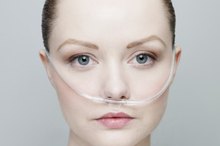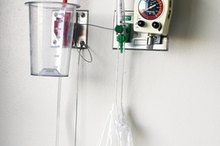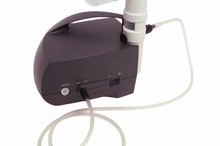Why Oxygen With CPAP?
Most people using CPAP (continuous positive airway pressure) are receiving only room air, which is put through a filter with no added oxygen. However, in certain cases, there are patients who require additional supplemental oxygen, which is added to the CPAP mask worn during sleep to increase oxygen blood saturation.
CPAP Vs. Oxygen
CPAP is used to treat apneas, which are repeated breathing disruptions during the night. During an apnea, the oxygen level in the blood will decrease, but it usually increases after a harmful respiratory event. CPAP treatment prevents these events and thus maintains oxygen at a normal level. However, some people continue to have low oxygen despite CPAP due to pulmonary disease.
When Is CPAP Not Enough
Differences Between Oxygen Tanks & Oxygen Concentrators
Learn More
When the resting oxygen level is low, or the patient has chronic obstructive pulmonary disease or other disorders, the delivery of CPAP may only serve to treat the obstructive apneas and may not help raise the overall oxygen level during the night.
How Doctors Decide Whether to Add Oxygen
Oxygen is added to the CPAP mask when a sleep study with pulse oximetry determines suboptimal oxygen levels in a patient. The clip worn on the finger during the study measures the percentage of blood oxygen saturation. This reading will remain low even with CPAP in some patients.
How Oxygen Is Administered
How to Change the Settings on a Resmed CPAP Machine
Learn More
Oxygen is delivered via a plastic tube directly to the CPAP machine or directly to the hose using a special adapter. This is in contrast to a typical oxygen mask or nasal cannula worn by patients who need oxygen while awake.
Alternatives
An alternative to oxygen administration is bilevel therapy, which two separate CPAP pressures are delivered in an attempt to increase oxygenation without adding supplemental oxygen. If successful, this can be a viable alternative to some patients.
Related Articles
Writer Bio
Nathan Schwartz holds a master's degree and works in the health care field as a technologist. Schwartz has five years of freelance writing experience, and has written reference material on a range of health and wellness topics.









